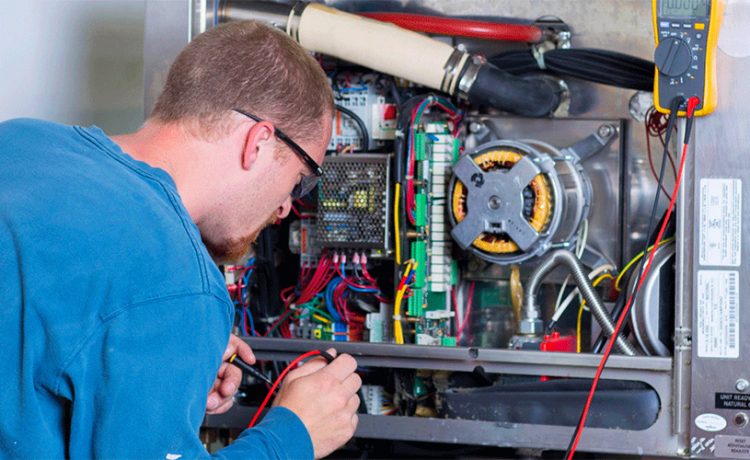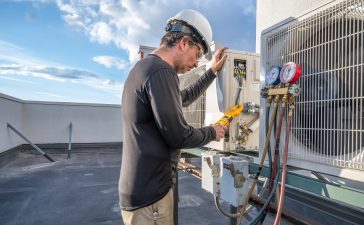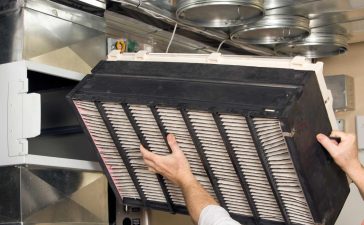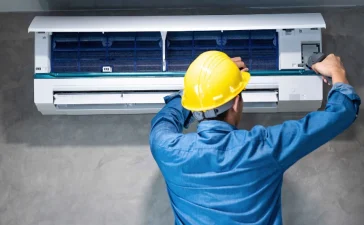How to Improve Your Home with Maintenance and Furnace Care

When it comes to creating a comfortable and efficient home, few things matter more than maintaining your heating system. The furnace is at the heart of any home’s heating infrastructure, ensuring warmth and comfort during the cold months. However, many homeowners often neglect regular maintenance of their furnace, leading to inefficiencies, higher energy bills, and even expensive breakdowns. In this article, we will explore how a well-maintained furnace, combined with a proper home maintenance strategy, can improve the overall comfort, efficiency, and safety of your living space. By integrating both regular furnace care and general home upkeep into your routine, you’ll be able to enjoy a more comfortable, energy-efficient, and durable home.
The Importance of Furnace Maintenance
Before diving into the specifics of home maintenance, it’s essential to understand why furnace care is crucial. A furnace that operates efficiently and is well-maintained can provide years of reliable service, whereas a neglected furnace may work harder than necessary, consume more energy, and have a significantly shorter lifespan. Regular maintenance not only helps the furnace function at optimal capacity but also offers long-term financial and environmental benefits.
Key Benefits of Furnace Maintenance
-
Improved Efficiency: A furnace that receives regular upkeep will work more efficiently, using less energy to heat your home. This translates to lower energy bills, which is especially important as utility costs continue to rise.
-
Extended Lifespan: Much like any other home appliance, your furnace has a finite lifespan. Regular care ensures that components such as filters, burners, and heat exchangers are working correctly, which can extend the life of the system and delay the need for costly replacements.
-
Better Indoor Air Quality: A furnace that is properly maintained will improve the air quality in your home. Dust and debris can accumulate inside the system, circulating harmful particles throughout your living space. Regular cleaning and filter replacement prevent these particles from contaminating your indoor air.
-
Increased Safety: Furnaces that are not maintained can pose serious risks, particularly gas-powered models. A neglected furnace may develop gas leaks or create unsafe combustion conditions. Annual inspections by a qualified technician can identify potential hazards before they become a danger to your household.
-
Prevent Breakdowns: Preventative maintenance catches issues before they escalate into expensive repairs or full system failures. By taking care of minor problems early, you avoid unexpected breakdowns that leave you without heat during the coldest months.
Step-by-Step Furnace Maintenance Tips
Now that we understand why furnace maintenance is so important, let’s look at some key steps you can take to ensure your system runs smoothly.
1. Replace or Clean Air Filters Regularly
Air filters are the first line of defense in your furnace’s system. They trap dust, dirt, and debris that can otherwise clog the furnace or get into the air ducts, decreasing efficiency and quality of air. Dirty filters restrict airflow, causing the furnace to work harder than necessary. Depending on your furnace and the type of filter you use, you should replace or clean the air filter every one to three months, especially if you have pets, allergies, or live in a dusty area.
2. Check the Thermostat Settings
Your thermostat is the command center of your furnace, controlling the temperature and triggering the system to start heating your home. Ensure that your thermostat is set to the desired temperature, and regularly check that it is functioning properly. You can even consider upgrading to a programmable thermostat, which allows you to set heating schedules based on your daily routine, reducing energy consumption.
3. Clear the Area Around the Furnace
To allow your furnace to operate without obstruction, keep the area around it clear. Dust, debris, and clutter around the furnace can block air vents and reduce airflow, causing strain on the system. It’s also essential for fire safety to keep flammable materials away from the furnace at all times.
4. Inspect the Ductwork
Your furnace relies on ducts to distribute warm air throughout your home. Over time, ducts can develop leaks, reducing the furnace’s efficiency and increasing energy costs. Visually inspect the ductwork for visible holes, cracks, or disconnected joints. Sealing any leaks and insulating ducts can ensure that the warm air reaches the intended rooms, rather than escaping into the attic or walls.
5. Lubricate Moving Parts
Furnaces have various moving parts, such as fans and belts, that help circulate air. Regular lubrication of these components ensures they operate smoothly without wear and tear. Lack of lubrication can lead to noisy operation and premature breakdowns. Many modern furnaces have sealed motors that don’t require lubrication, but older models do, so it’s important to check your manual or ask a professional technician about your furnace’s requirements.
6. Inspect and Clean the Burner Assembly
For gas furnaces, it’s important to check the burner assembly for dirt or debris that could block gas flow. Cleaning the burners ensures proper combustion, which promotes energy efficiency and reduces the risk of carbon monoxide buildup. It is advisable to leave this job to a professional unless you’re familiar with furnace components, as improper handling can lead to unsafe conditions.
7. Examine the Heat Exchanger
The heat exchanger is responsible for transferring heat from the combustion process to the air that circulates throughout your home. Cracks or corrosion in the heat exchanger can cause carbon monoxide leaks, making it a critical component to check regularly. A professional furnace technician should inspect the heat exchanger annually, especially in older units.
8. Schedule an Annual Professional Inspection
While you can handle some basic maintenance tasks yourself, it’s essential to schedule a professional inspection once a year. A licensed HVAC technician can perform a more thorough check of your system, ensuring that all components are working efficiently and safely. They can also address any issues you may have missed and provide recommendations for improving your furnace’s performance.
General Home Maintenance for Optimal Furnace Function
While furnace maintenance is important, general home upkeep can enhance the effectiveness of your heating system and help reduce energy bills. When combined with furnace care, these measures create a holistic approach to home comfort.
1. Insulate Your Home Properly
Proper insulation is key to maintaining the temperature inside your home and ensuring that your furnace doesn’t have to work overtime. Insulation helps keep warm air inside during the winter and cool air inside during the summer. Check your attic and walls to ensure that your home is properly insulated. Upgrading insulation is a relatively low-cost improvement that pays off in energy savings.
2. Seal Gaps and Leaks
Air leaks around windows, doors, and ducts can significantly reduce your home’s heating efficiency. Inspect your windows and doors for drafts and seal any gaps using weatherstripping or caulk. This will help keep warm air in and cold air out, reducing the load on your furnace.
3. Maintain Your Ventilation System
Ventilation systems are crucial for regulating air quality and temperature. Ensure that your vents are open and unblocked, allowing air to circulate freely throughout the house. In addition, consider installing a whole-home humidifier to help maintain proper moisture levels, as dry air can make heating less efficient and cause discomfort.
4. Clean Chimneys and Vents
If you have a chimney or venting system connected to your furnace or other heating appliances, it’s important to have them cleaned regularly. Blockages in the chimney can reduce airflow and cause dangerous conditions like carbon monoxide buildup. Ensure that vents are clear and working properly to maintain both efficiency and safety.
Conclusion: A Comfortable Home Starts with Proper Maintenance
When it comes to improving your home’s comfort and efficiency, furnace maintenance plays a critical role. Regular upkeep ensures that your furnace runs smoothly, saving you money on energy bills while prolonging the life of your system. By incorporating general home maintenance strategies—such as proper insulation, sealing air leaks, and cleaning ducts—you can maximize your furnace’s effectiveness, creating a home that is not only warm and inviting but also energy-efficient and safe.
Mastering the art of furnace maintenance and home upkeep will pay off in the form of reduced repair costs, lower utility bills, and a more comfortable living environment for you and your family. Whether you take on some of the maintenance tasks yourself or enlist the help of a professional, the effort is well worth the benefits of a properly functioning home heating system.








